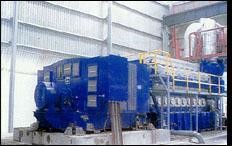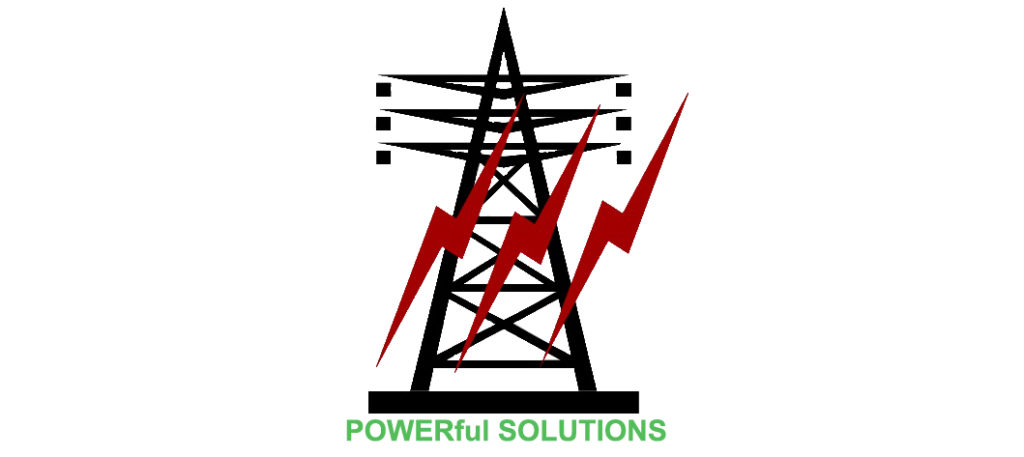(This article was presented at DREAMS 2007 (Translating Ideas to Reality) Conference on current trends in Engineering Analysis & Design organised by General Electric at John F.Welch Technology Center, Bangalore, India on 12th Mar 2007)
Preamble
The basic infrastructure for industrial growth is electric power and hence power plants have a significant role in economic development of any country. With India’s ambitious 8 to 10% GDP growth every year, India need to add more than a 100000 MW with investment of around a 100000 Million US $ in next 5 years including development of 8 Ultra Mega Power Projects of each 4000 MW capacity. This has modified the outlook of Indian Power Industry into challenging ground for power engineers and energy managers with more optimism and opportunities.
The power sector is a highly capital intensive area with cost per MW approaching highest ever levels for new Power Plant projects due to reasons of limited resources and requirement of environmental limitations. Also the fuel prices have soared very high, particularly price of Natural Gas in the last few years and most of the countries are turning towards coal based plants with advanced technology for higher efficiency and environment friendliness.
With the ambitious power generation program envisaged, new installations of varying capacities are coming up globally. A majority of such installations would involve international competition because of liberalization of economy and participation of private power producers.
Hence there is every need to ensure that any system selected in a power plant is an optimum one with a proper techno-economic trade-off between the overall efficiency and the capital investment.
In the design of power plants, heat balances have a pivotal role. These determine and dictate the design parameters of almost all the equipment in the power cycle. Moreover, it is the only tool for determination of cycle efficiency and analyzing the impact of changes in cycle configuration and system parameters on cycle efficiency.
Most of the Heat balance software are developed and extensively used by the equipment manufacturers. These are highly equipment oriented implying that they are best suited for their own particular machines. But the needs of utilities / consultants are of a different nature. They require wide flexibility in terms of cycle configuration and operating parameters. They need to optimize with respect to fuel prices as applicable at the project, specific site ambient conditions etc., while keeping in tune with the state of art technology. And also there is few Heat balance software packages available in the market with limitations which could never be understandable by the user (Utility / Consultants) and the user will remain suffering without any answer for these limitations, which will come as constraint in reaching the objectives.
After working as user of some of these software packages available in the market and in order to address the constraints and limitations posed by them, to have more flexibility to analyze wide range of power generating equipment and to match the expectations of diverse industry sector, we tried to develop the Expert System Software by integrating the experience generated from actual field projects and the result of more than a decade long effort has effected in accomplishment of these successful software for the system design of utility / combined cycle / captive / decentralized / co-generation / biomass / waste heat based power plants.
Heat Balance and System Design
The term “heat balance” is generally applied to a schematic flow diagram for a thermal power cycle, on which thermodynamic properties and mass flow are indicated, for all major flow streams in the power cycle. This diagram is the result of a detailed calculation, which applies the laws of conservation of mass and conservation of energy, along with manufacturers’ expected performance, to each component in the power cycle. In addition to determining flow and state properties (pressure, temperature, enthalpy, and entropy) for all flows in the cycle, the calculation also presents the overall performance (efficiency and output) of the generating unit is predicted.
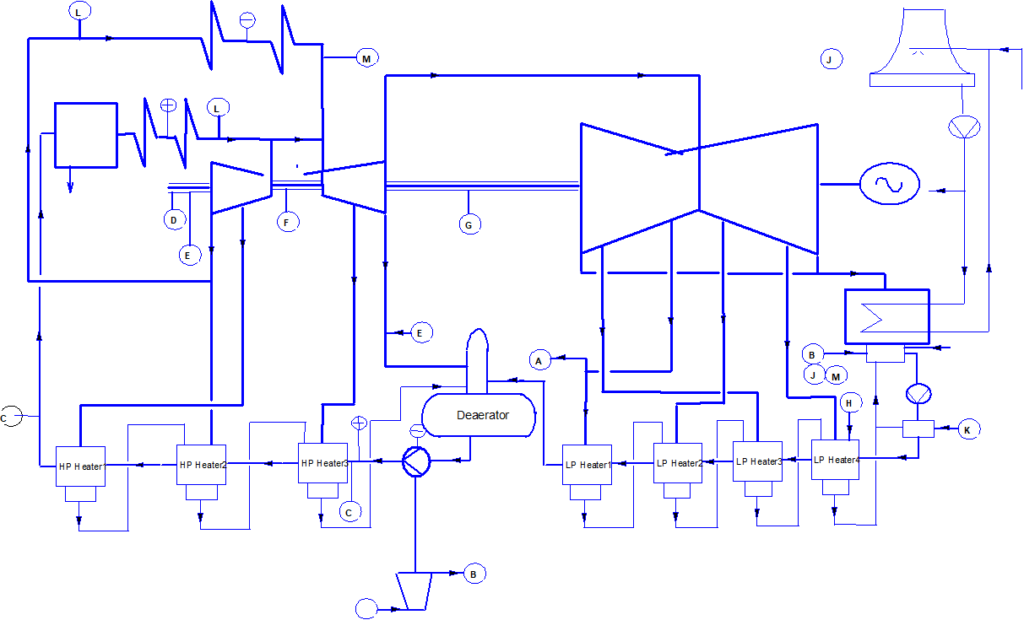
However, the term “heat balance” also refers to that specialized area of mechanical engineering, which deals with thermodynamic performance of power cycles. It involves efforts in which such diagrams are prepared, along with studies for sizing, selecting and optimizing the equipment in the cycle.
Heat balance studies do not end with the construction of a plant. Heat balance and system design software is often used upon to perform analysis of test data where there is a suspected loss of efficiency in the cycle. It can also simulate a variety of alternatives operating modes for a plant so that the plant operators can select the most economic alternative for a given situation. It also has the capability to predict how a proposed modification will affect plant performance, so that equipment purchases can be justified to management.
Early in the development of the heat balance, it will also be necessary to begin preparing purchase specifications for major pieces of mechanical equipment, and for major motors. Process data from the preliminary heat balances will be provided to vendors for preparation of bids. For example, condenser duty, site ambient conditions (or water temperature, it is a once through design), and desired operating parameters such as back pressure and load will be provided to the condenser and/or cooling tower manufacturers for their information in preparing proposals; feed water and condensate flows and head requirements will go out to pump vendors; and so on. The heat balance is the reference document for the sizing of all the equipment in the power generating cycle.
Since most projects are developed and bid on a lump-sum turn-key basis today, it is up to the heat balance and system design software to select a cycle design which will allow for a winning design. This will typically be the cycle, which minimizes the total life-cycle cost for the station to be built.
It is often up to the heat balance and system design software to determine how overall unit performance (efficiency, capacity, part load operating flexibility and at times availability) will be affected by changes to the fundamental cycle configuration. Then, capital cost and operating costs for each alternative can be determined by contacting vendors, and by experience with previous projects.
Although simplified heat balance calculations can be performed by hand, they are typically performed on a computer. This is because of the numerous references to steam property tables and manufacturers’ tabulated performance data. Also, the complex nature of the calculation precludes a closed form solution, so that it is necessary to iterate in order to achieve a “balance”. (The term heat “balance” implies just that. Conservation of mass and energy around each component, as well as for the cycle as a whole must be achieved for a valid result).
Several computer programs are commercially available for calculating heat balance for electric generating units. In addition, equipment manufacturers and large engineering corporations will maintain proprietary heat balance software, although these are typically not available for commercial distribution.
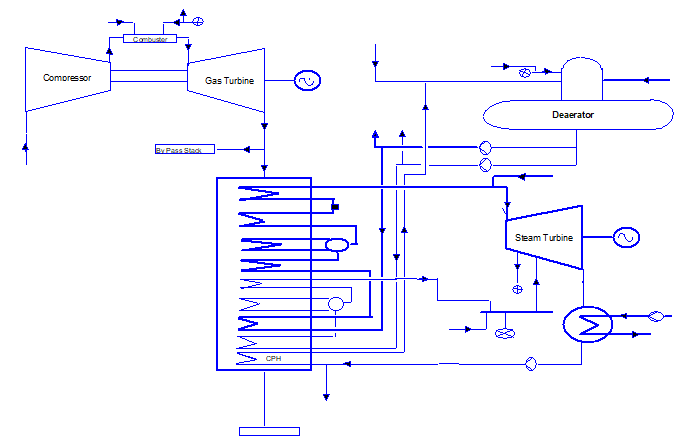
Heat balance diagrams are generally prepared in several stages, which reflect various levels of refinement in developing the cycle design. A steam turbine manufacturer will provide a heat balance for the turbine and feed water system, in which the performance for balance of plant components not in his scope of supply are estimated using nominal values. This is usually referred to as a “turbine vendor balance.”
While these estimates (for such items as feed water heater performance, pump performance, condenser back pressure, auxiliary steam and water flows and variations in controllable parameters at off-design loads) are reasonable when considering the turbine portion of the conceptual project, they must be prepared in greater detail later in the project.
The ESS products will refine the heat balance by integrating the actual performance for such components as pumps, condenser, cooling tower, boiler and feed water heaters and also more realistic values for steam line pressure drops, auxiliary steam and water flows, and auxiliary power consumption. If several modes of operation are being analyzed, it is not uncommon to present a series of diagrams to demonstrate the effect being studied.
Expert System Software (ESS) for Power Plants
ESS are not simple heat balance generation programs, but, it seamlessly integrates the complete power plant mechanical system design and provide total solutions for cycle evaluation analysis and system design of utility / combined cycle / captive / decentralized / co-generation / biomass / waste heat based power plants detailing steam generator & auxiliaries, gas/steam turbine generator & auxiliaries, circulating water system, auxiliary cooling water system, plant water system, compressed air system, HVAC, fire fighting system and fuel & ash handling system..
The capability of these ESS programs include computation of heat rate, auxiliary power consumption, cost estimation, cost of power generation, plant performance and integrated financial analysis for project feasibility.
The ESS has thorough understanding of the physical equipment in the plant, its design and operation. It is also proficient in thermodynamics, heat transfer and fluid dynamics. In addition to these fundamental engineering disciplines, it also has firm knowledge of engineering economics, since nearly all equipment selection studies will involve optimizing the total analyzed cost of various alternatives.
The ESS products are based on the working knowledge in operating plants and are familiar with the general practices and procedures of a generating station.
The role of ESS does not end with the design of a unit. The ESS can also be a valuable asset to an operating plant. Prior to commissioning, a new unit must go through a rigorous performance acceptance test, in order to demonstrate the contractually agreed upon levels of a capacity and efficiency. Since these targets will be defined with respect to certain nominal set of conditions (such as ambient temperature, relative humidity, an assumed fuel composition, a nominal process steam flow, power factor, river water temperature etc.) a set of correction parameters must be prepared to adjust the performance during the day of test, so that, it can be compared to the contract conditions.
It is likely that during the life of the plant, equipment will degrade and cause a loss in efficiency and/or plant. ESS would be able to collect a set of readings from then plant process data computer, and compare these to the expected process data for the same operating point. The component(s) causing the problem can be identified, and the expected potential for improvement calculated.
ESS could also be used to determine the effect of changes in steam turbine efficiency, which could provide the justification for performing a major overhaul. The value of added generation (or reduced fuel expenditure) would be compared to the cost of labor, materials and lost revenue during the extended outage.

The role of the ESS in development of a project is closely tied to nearly every aspect of the task, from conceptual design and selection of the basic unit configuration, through specification and sizing of equipment, to determining the actual predicted performance of the unit based on finalized equipment selection.
The emission data required such as SPM, SOx, NOx etc., for Environment Impact Study is being arrived at with the selected equipment and parameters for the design of a Green House Power Plant to meet today’s stringent State Statutory requirements.

STCOGEN – Expert System Software for Cogeneration & Captive Power
The STCOGEN, Expert System Software that will perform the system design and performance calculation of steam turbine based cogeneration / captive / decentralized power plant system designing and steam cycle evaluation & simulation.
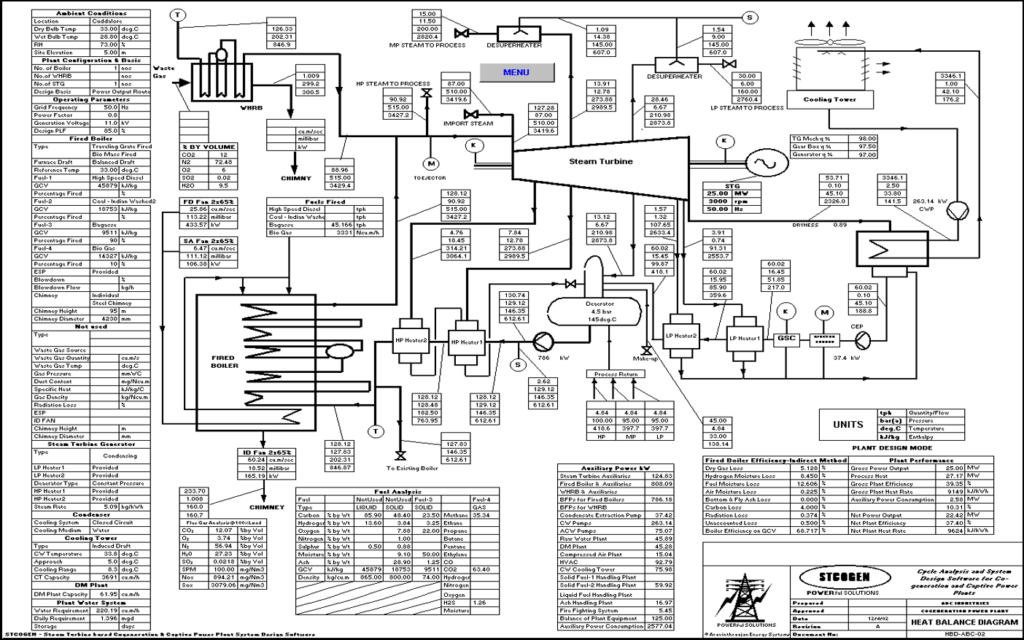
This software has more around 200 fuel details in its database including biomass fuels and capable in designing multi-fuel fired combined heat and power plant up to 100 MW capacity.
The salient features include waste heat boiler, multi-fuel fired boiler, multiple regenerative heaters, back pressure and condensing turbine, air cooled or water cooled condenser and automatic generation of layout requirement, equipment list, pump list, electric motor & load list, piping system design & bill of quantities and plant techno-economic feasibility analysis.
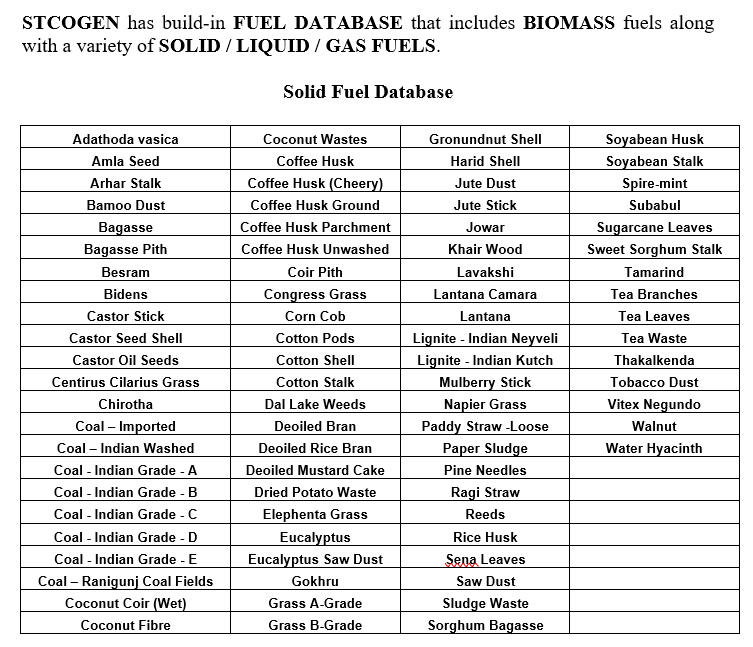
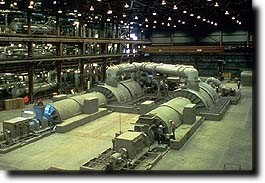
PPCYCLE – Expert System Software for Utility Thermal Power Plants
The PPCYCLE, an Expert System Software which will perform both the system design and performance calculation of Utility Thermal Power Plants for steam cycle evaluation analysis and heat balance generation of reheat & regenerative system based power plant of any sizes above 60 MW.
This software is capable of handling super-critical parameters and salient features include multiple regenerative heaters and turbine driven boiler feed pumps, plant performance calculations including Boiler and Turbine performance.
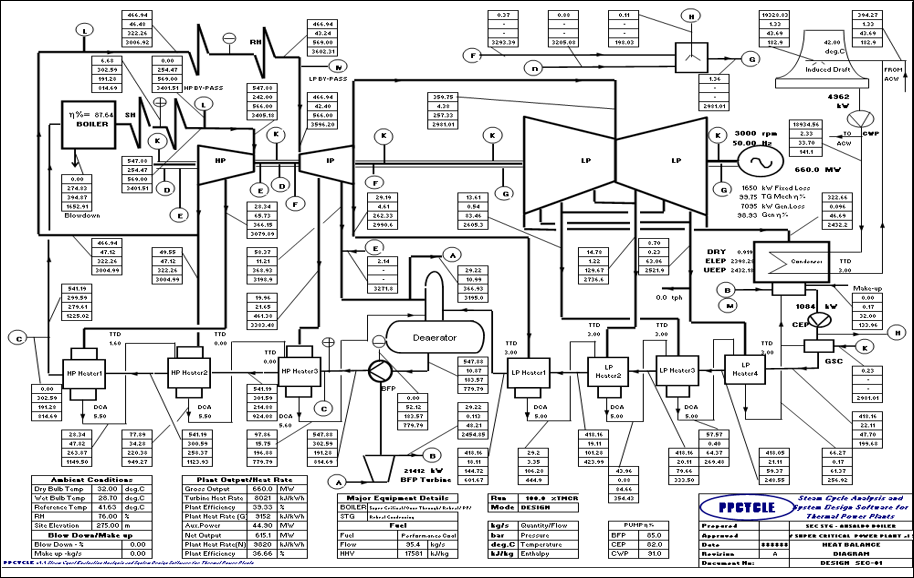
This Expert System designs entire Power Plant System including Boiler, Turbine, Turbine Driven/Motor Driven Boiler Feed Pumps, Deaerator, HP and LP Heaters, Condenser, CEP, Cooling Tower, CW System, ACW System, Plant Water System, Fuel Handling Plant, Ash Handling Plant, Air Conditioning and Ventilation System, Compressed Air System, Fire Fighting System, and Plant Power & Utility Piping System.
It gives sizing details like capacity etc., with basic parameters for selection of the equipment for the Utility Power Plant. It optimizes the Plant Economics by calculating Cost of Generation and Project Cost Estimation. It computes the Heat Rate and Auxiliary Power consumption of the Power Plant.
The important feature of this software is that it performs OFF-DESIGN performance of the power plant and the behavior of the plant for different operating conditions can be stimulated by varying parameters.

GTCYCLE – Combined Cycle Power Plant Expert System Software
The GTCYCLE handles system design of Combined Cycle Power Plants and designs entire Power Plant System including Gas Turbine, HRSG, Steam Turbine, HRSG Feed Pumps, Deaerator, Condenser, CEP, Cooling Tower, CW System, ACW System, Plant Water System, Fuel Unloading & Handling Plant, Air Conditioning and Ventilation System, Compressed Air System, Fire Fighting System, and Plant Power & Utility Piping System.
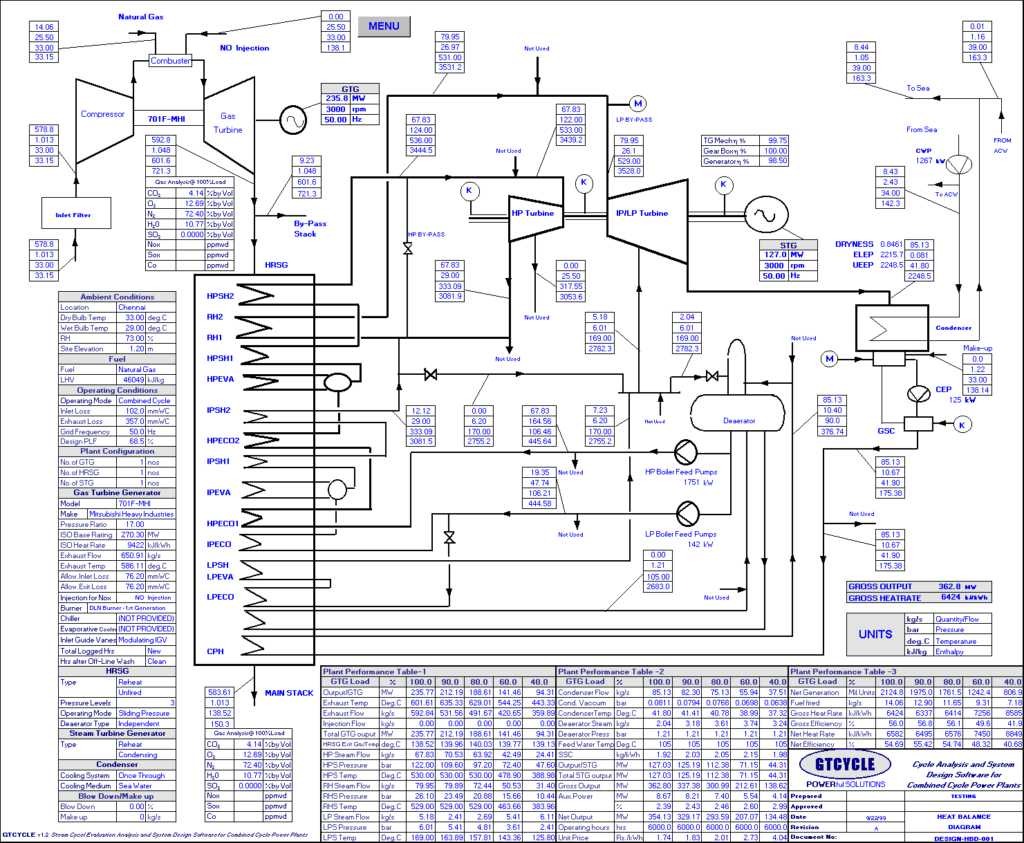
This expert system software evaluates the performance of the gas turbine automatically for the given site and operating condition. Another important feature of this software is its capability in estimating deterioration in output and heat rate due to aging and compressor fouling between off-line washing of the compressor.
It gives sizing details like capacity etc., with basic parameters for selection of the equipment for the Utility Power Plant. It optimizes the Plant Economics by calculating Cost of Generation and Project Cost Estimation. It computes the Heat Rate and Auxiliary Power consumption of the Power Plant.
The Gas Turbine Features include;
Evaporative Coolers
Steam/Electric Chillers
Selection of Burners for Nox
Nox Control by Steam and Water Injection
Fuel Flexibiity (Liquid or Gas)
Aging Correction
Effect of compressor fouling between off-line compressor wash
Automatic Corrections for ambient and operating & site parameters
The Gas Turbine Corrections include;
Exhaust Gas Temperature Correction for Air Inlet Temperature
Output Correction for Air Inlet Temperature
Exhaust Flow Correction for Air Inlet Temperature
Heat Rate Correction for Air Inlet Temperature
Output and Exhaust Flow Correction for Altitude
Output and Heat Rate correction for Humidity
Correction for non-recoverable loss due to aging
Correction for performance loss following normal maintenance and Compressor Wash
The Steam Turbine Features include;
Non-Reheat Condensing
Reheat Condensing
Extraction for Steam for Nox Control
Low Pressure Steam Admission
Automatic Calculation of back pressure based on ambient and Cooling Water Temperature
The expansion efficiency, Turbine Mechanical, gear box and generator efficiencies can be varied to suit a particular turbine.
The HRSG Features include;
Reheat / Non-Reheat Type
Maximum upto 4 Pressure Levels
Sliding or Constant Pressure Mode
SH / RH Temperature Control Range
Independent or Integral Deaerator
Condensate Pre-heater
HRSG Temperature profile at different Load
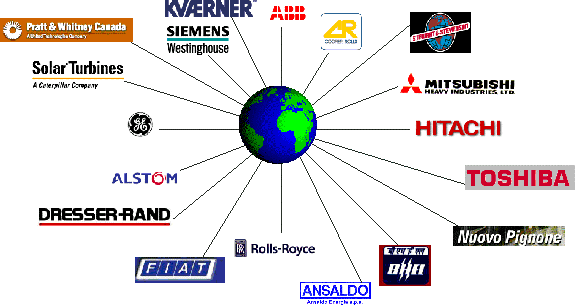
It has built-in database (Performance curves) containing 170 widely used heavy duty & aero-derivative gas turbines (1 MW to 288 MW Capacity) from reputed manufactures like General Electric, Alsotm, Siemens-Westinghouse, Prat & Witney, Rolls Royce, MHI, etc., which is used in the expert system for the system design, cycle analysis and simulation of combined cycle power plants.
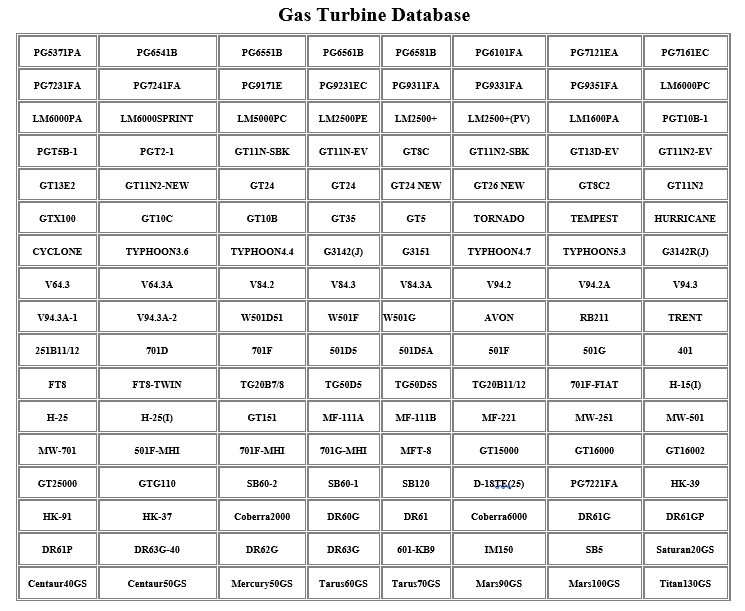
The Heat Balance Diagram depicts the Combined Cycle Power Plant configuration and also gives performance details like Heat-Rate, Gross Power, Auxiliary Power Consumption, Net Power, and Plant Efficiency.
